- Home
- Clive Cussler
Black Wind
Black Wind Read online
Black Wind
By: Clive Cussler & Dirk Cussler
Clive Cussler's dazzling new Dirk Pitt adventure
"Clive the Mighty!" hailed Kirkus Reviews about Cussler's last Dirk Pitt novel, Trojan Odyssey. "Hurricane Clive at his most tumultuous." Nobody has been able to match Cussler yet for the intricate plotting and sheer audacity of his work, and Black Wind sets the bar even higher.
In the waning days of World War II, unbeknownst to all but a handful of people, the Japanese tried a last, desperate measure. Two submarines were sent to the West Coast of the United States, their cargo a revolutionary new strain of biological virus, their mission to unleash hell.
Neither sub made it to the designated target. But that does not mean they were lost.
Someone knows about the subs and what they carried, knows too where they might be, and has an extraordinary plan in mind for the prize inside-a plan that could reshape America, and the world, as we know it. All that stands in the way are three people: a marine biologist named Summer, a marine engineer named Dirk ... and their father, Dirk Pitt, the new head of NUMA.
Pitt has faced devastating enemies before, has even teamed up with his children to track them down. But never has he encountered such pure evil-until now.
Filled with breathtaking suspense and extraordinary imagination, Black Wind is yet further proof that when it comes to adventure writing, nobody beats Clive Cussler.
Clive Cussler is the author or coauthor of twenty-seven other books, including the Dirk Pitt'* adventure Trojan Odyssey, the Kurt Austin novel Lost City, and the new Oregon series novels Golden Buddha and Sacred Stone. He is also the author of the nonfiction Sea Hunters and Sea Hunters II; these describe the true adventures of the real NUMA, which, led by Cussler, searches for lost ships of historic significance. With his crew of volunteers, Cussler has discovered more than sixty ships, including the long-lost Confederate submarine Hunley. He lives in Arizona.
Dirk Cussler, an MBA from Berkeley, worked for many years in the financial arena, and now devotes himself full-time to writing. For the last several years, he has been an active participant and partner in his father's NUMA expeditions and served as president of the NUMA advisory board of trustees. He lives in Arizona.
Jacket design 2004 Laurence Ratzkin Jacket illustration a. 2004 Craig White
Photograph of the authors Paul Peregrine/ Peregrine Studios
Visit our website at: www. penguin. com
Visit the NUMA website at: www.numa.net a member of Penguin Group (USA)
G. P. PUTNAM
Penguin Group (USA) Inc
DIRK PITT ADVENTURES BY CLIVE CUSSLER
Trojan Odyssey
Valhalla Rising
Atlantis Found
Flood Tide
Shock Wave
Inca Gold
Sahara
Dragon
Treasure
Cyclops
Deep Six
Pacific Vortex
Night Probe
Vixen 03
Raise the Titanic
Iceberg
The Mediterranean Caper
KURT AUSTIN ADVENTURES BY CLIVE CUSSLER WITH PAUL KEMPRECOS
Lost City
White Death
Fire Ice
Blue Gold Serpent
OREGON FILES ADVENTURES BY CLIVE CUSSLER WITH CRAIG DIRGO
Sacred Stone
Golden Buddha
NONFICTION BY CLIVE CUSSLER AND CRAIG DIR GO
The Sea Hunters II
Clive Cussler and Dirk Pitt Revealed
The Sea Hunters
G. P. PUTNAM'S SONS NEW YORK.
Clive Cussler and DIRK CUSSLER
G. p. Putnam's sons
Publishers Since 1838
Published by the Penguin Group
Penguin Group (USA) Inc." 375 Hudson Street, New York, New York 10014, USA Penguin Group (Canada), 10 Alcorn Avenue, Toronto, Ontario, Canada M4V 3B2 (a division of Pearson Penguin Canada Inc.) Penguin Books Ltd, 80 Strand, London we2R
Offices:
80 Strand, London we2R ORL, England
Copyright 2004 by Sandecker, RLLLP
All rights reserved. No part of this book may be reproduced, scanned, or distributed in any printed or electronic form without permission. Please do not participate in or encourage piracy of copyrighted materials in violation of the author's rights. Purchase only authorized editions.
Published simultaneously in Canada
Library of Congress Cataloging-in-Publication Data
Cussler, Clive. Black wind / Clive Cussler and Dirk Cussler.
p. cm.
ISBN 0-399-15259-8
1. Pitt, Dirk (Fictitious character)-Fiction. I. Cussler, Dirk. II. Title.
PS3553.U75B56 2004 2004053536
813'.54-dc22
Printed in the United States of America 13579 10 8642
This book is printed on acid-free paper. @ Book design by Lovedog Studio
This is a work of fiction. Names, characters, places, and incidents either are the product of the author's imagination or are used fictitiously, and any resemblance to actual persons, living or dead, businesses, companies,
events, or locales is entirely coincidental.
In memory of my mother, Barbara, whose love,
compassion, kindness, and encouragement are deeply missed by all who knew her.
DEC.
Acknowledgments
With appreciation and gratitude to Scott Danneker, Mikejntzpatrick, Mike Hance, and George Spyrou of Airship Management Services, for sharing the wondrous world of airship flight.
Thanks also to Sheldon Harris, whose book Factories of Death has helped open the door to the horrors of biological and chemical warfare practiced during World War II and its thousands of forgotten victims.
PROLOGUE
Japanese Imperial submarine I-403 and Seiran float plane
December 12, 1944 Kure Naval Base, Japan
Lieutenant Commander Takeo Ogawa glanced at his wristwatch and shook his head in irritation.
"Half past midnight already," he muttered anxiously. "Three hours late and still we wait."
A young ensign staring through the glazed eyes of a sleep-deprived insomniac nodded slightly at his superior's grieving but said nothing. Waiting atop the conning tower of the Japanese Imperial Navy submarine i-403, the two men gazed across the naval yard searching for signs of a pending arrival. Beyond the expansive naval base, a haphazard twinkling of nighttime lights glistened about the scenic Japanese city of Kure. A light drizzle fell, lending an eerie tranquility to the late hour, which was broken by the distant sounds of hammers, cranes, and welding torches. Repairs to enemy-damaged ships and new vessel construction persisted around the clock in other parts of the shipyard, in a futile rush to aid the increasingly bleak war effort.
The distant whine of a diesel truck soon echoed across the water.
the sound rising in intensity as the vehicle approached the submarine docks. Rounding the corner of a brick warehouse, a slate-colored Isuzu cargo truck rumbled into view and turned along the wharf. The driver inched his way cautiously toward the submarine's pen as he struggled to make out the edges of the darkened pier, barely visible under the truck's wartime-blackened headlights. Pulling alongside a large gangplank, the truck ground to a halt as its worn brakes squealed loudly in protest.
A moment of silence ensued, then six heavily armed soldiers sprang from the truck bed and enveloped the vehicle in a perimeter guard. As Ogawa made his way down from the conning tower to the dock, he sensed one of the guards pointing a weapon in his direction. The soldiers were no Imperial Army regulars, he noted, but elite members of the feared Kempei Tai military police.
Two uniformed men exited the cab of the truck and approached
Ogawa. Recognizing a superior officer, Ogawa stood at attention and saluted smartly.
"I've awaited your arrival, Captain," Ogawa stated with a tinge of annoyance.
Captain Miyoshi Horinouchi ignored the innuendo. As staff operations officer for the Sixth Fleet, his mind was occupied with graver matters. The Japanese submarine fleet was slowly being decimated in the Pacific and the Imperial Navy had no answer for the antisubmarine warfare technologies being deployed by the American forces. Desperate battles by the fleet's submarines against overwhelming odds inevitably resulted in the loss of crew and vessels, which weighted heavily on Horinouchi. His short-cropped hair had turned prematurely white, and stress lines creased his face like dry riverbeds.
"Commander, this is Dr. Hisaichi Tanaka of the Army Medical College. He will be accompanying you on your mission."
"Sir, I am not accustomed to carrying passengers while on patrol," Ogawa replied, ignoring the small bespectacled man at Horinouchi's side.
"Your patrol orders to the Philippines have been rescinded," Horinouchi replied, handing Ogawa a brown folder. "You have new orders. You are to take Dr. Tanaka and his cargo aboard and proceed immediately per fleet directives to strike at the enemy's doorstep."
Glancing at one of the guards holding a German Bergman MP34 submachine gun pointed in his direction, Ogawa asserted, "This is most unusual, Captain."
Horinouchi tilted his head to the side, then took a few steps to his right. Ogawa followed, leaving Tanaka out of earshot. Speaking softly, Horinouchi continued.
"Ogawa, our surface fleet was annihilated at Leyte Gulf. We counted on a decisive battle to stop the Americans, but it was our own forces that were defeated instead. It is just a matter of time before all of our remaining resources will be assigned in defense of the homeland."
"We will make the Americans pay heavily in blood," Ogawa said harshly.
"True, but there is no question that they have the will to conquer, regardless of the losses. The slaughter of our own people will be appalling." Horinouchi contemplated the sacrifice of his own family and fell silent for a moment.
"The Army has approached us for assistance in a valiant operation," he continued. "Dr. Tanaka is affiliated with Unit 731. You will take him and his cargo across the Pacific and launch an attack on the American mainland. You are to avoid detection and protect your boat at all costs en route. Succeed, Ogawa, and the Americans will bow to a truce and our homeland will be preserved."
Ogawa was stunned by the words. His fellow submarine commanders were waging a mostly defensive battle to protect the remnants of the surface fleet, yet he was to cross the Pacific single-handedly and launch an attack that would end the war. He might have ridiculed the idea, had it not been a fleet staff officer dictating the order to him out of desperation in the middle of the night.
"I am most honored by your confidence, Captain Horinouchi. Rest assured my crew and officers will uphold the honor to the emperor. If I may ask, sir, what exactly is Dr. Tanaka's cargo?" Ogawa inquired.
Horinouchi gazed forlornly across the bay for several seconds. "Maka^e," he finally muttered quietly. "An evil wind."
Under the watchful eye of Dr. Tanaka, a half-dozen oblong wooden crates were carefully loaded by the Kempei Tai guards into the forward torpedo room of the I-403 and tightly secured. Ogawa ordered the submarine's four diesel engines turned over and the deck lines released. At half past two in the morning, the iron sub nosed slowly into the inky harbor and inched its way past several other fleet I-boats docked in the yard. Ogawa noted with curiosity that Horinouchi sat silently in the darkened truck on the pier, refusing to leave until after the I-403 was well out of sight.
Creeping past the docks and warehouses of the sprawling navy yard, the sub soon approached a massive shadow looming against the darkness ahead. Lying quietly in a repair dock, the massive battleship Yamato towered above the submarine like a behemoth. With its massive eighteen-inch guns and sixteen-inch-thick armor plating, the Yamato was the most feared vessel afloat. Ogawa admired the lines and armament of the world's largest battleship as he sailed past, then felt a touch of pity toward her. Like her sister ship, the Musashi, recently sunk in the Philippines, the Yamato, he feared, was destined to find her way to the bottom of the sea before the war was over.
Gradually the lights of Kure fell away as the submarine snaked around several large islands, then entered the Seto Inland Sea. Ogawa ordered increased speed as the mountainous island outcroppings fell away and the first gray patches of predawn light tinted the eastern sky. As he marked their route in the conning tower with the I-403 navigator, Ogawa was approached by the executive officer climbing up from below.
"Hot tea, sir," Lieutenant Yoshi Motoshita said, thrusting a small cup toward the commander. A thin man with a warm demeanor, Motoshita mustered a grin even at five in the morning.
"Yes, thanks," Ogawa replied crisply before gulping at the tea. The hot liquid was a welcome tonic against the chilled December air and Ogawa quickly drained the cup.
"The sea is unusually calm this morning," Motoshita noted.
"Fine conditions for fishing," Ogawa said reflectively. The son of a fisherman, Ogawa had grown up in a small village on the southern island of Kyushu. Accustomed to a hard life on the water, Ogawa had overcome a modest background by passing the formidable entrance exams to Etajima, the Japanese naval academy. After gaining his commission, he was drawn to the growing prewar submarine force and served on two boats before attaining command of the I-403 in late 1943. Under his leadership, the I-403 had sunk a half-dozen merchant ships, along with an Australian destroyer in the Philippines. Ogawa was considered one of the top submarine captains remaining in the rapidly shrinking underwater fleet.
"Yoshi, we'll initiate a zigzag running pattern when we reach the strait, then submerge before we leave the mainland. We can take no chances with enemy submarines patrolling off our coast."
"I will alert the crew, sir."
"And Dr. Tanaka. See that he is situated comfortably."
"I have offered him my cabin," Motoshita said with a pained look. "Judging by the stack of books he brought with him, I think he will keep himself occupied and out of our way."
"Very well," Ogawa replied, wondering silently about his unwanted passenger.
As a crimson sun crept up over the eastern horizon, the I-403 veered south from the Inland Sea into the Bungo Strait, a pathway above Japan's southern island of Kyushu that poured into the Pacific Ocean. A gray destroyer limped past the sub on its way back to port, listing heavily to one side and showing a rash of gaping holes in its bridge and decks, the result of a nasty encounter with a pair of U.S. Navy Hellcats. On the submarine, several petty officers crowded the conning tower to take a final glimpse of their green island nation, uncertain as all seamen departing for bat de whether they would return home again.
When the approach to the Pacific became visible to the lookout, Ogawa issued the command to dive. A loud bell clanged throughout the submarine and sailors scurried to secure the deck and hatches.
"Submerge to fifteen meters," Ogawa ordered from the bridge.
Large ballast tanks were flooded with seawater and the diving planes tipped forward. With a rush of collapsing water, the I-403's nose dipped downward and the entire submarine was quickly gobbled up by the murky green sea.
In the Pacific waters off the Bungo Strait, aggressive American submarines lurked in the depths hunting merchant supply ships or armed vessels en route from the Kure Navy Base. Submarine-against-submarine attacks were not unheard of and Ogawa was not about to make himself easy fodder. Entering the Pacific waters, he quickly aimed the I-403 northeast and away from the bulk of the wartime traffic traveling south toward the Philippines.
As were most subs of its era, the I-403 was powered by diesel and electric motors. In daylight hours, the I-403 would operate submerged, powered by battery-operated electric motors that pushed the sub along at a sluggish 6 knots per hour. Under cover of darkness, the I-403 would
surface and crank up the diesel engines, which propelled the boat to better than 18 knots, while recharging the batteries. But the I-403 was no ordinary submarine. Stretching over 390 feet long, the I-403 was one of a handful of Sen toku-class submarines, which were the largest built in their day. The massive iron vessel displaced over 5,200 tons and was pushed through the water by four 7,700-horsepower diesel engines. The I-403's truly unique feature, however, was the vessel's armament of aircraft. The I-403 could carry three Seiran float planes which were small converted dive-bombers that could be launched from a catapult on the center bow. While traveling at sea, the planes were disassembled and stored in a 110-foot-long watertight hangar that stretched along the sub's deck. A shortage of aircraft had forced Ogawa to give up one of his seaplanes for coastal reconnaissance, however, and his vessel now carried just two of the Seiran aircraft.
Once the I-403 had safely entered the Pacific, Ogawa retired to his cabin and reread the brief mission orders Horinouchi had given him. The succinct commands called for him to sail a northerly route across the Pacific, with a refueling stop in the Aleutians. He was to proceed to the northwest coast of the United States, where his two aircraft were to launch air attacks on the cities of Tacoma, Seattle, Victoria, and Vancouver.
On the face of it, it appeared a futile gesture, thought Ogawa. Japan needed her submarines for homeland waters defense rather than instigating minuscule attacks with a pair of small aircraft. But there was the question of Dr. Tanaka and his unidentified cargo.
Summoned to Ogawa's cabin, Tanaka bowed gracefully before entering the cramped quarters and seating himself at a small wooden table. The slightly built scientist bore a shrewish and unsmiling face. A pair of vacant black eyes that were magnified by thick glasses augmented his sinister appearance.
Dispensing with formalities, Ogawa pressed immediately for the nature of the doctor's presence.
"Dr. Tanaka, my written orders are to sail this vessel to the west
coast of North America and launch an airborne attack on four cities. There is no mention of your duties or the nature of your cargo. I must ask what your role in the mission is."
"Commander Ogawa, rest assured that my assignment here has been authorized at the highest levels," Tanaka replied in a quiet monotone voice. "I will be providing technical assistance for the attack operation," he continued.

 Deep Six
Deep Six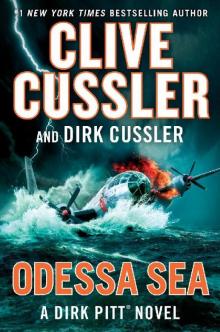 Odessa Sea
Odessa Sea Flood Tide
Flood Tide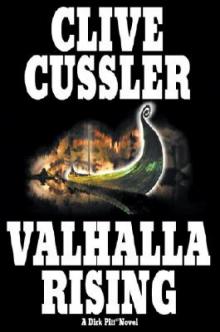 Valhalla Rising
Valhalla Rising Thriller 2
Thriller 2 The Tombs
The Tombs Lost Empire
Lost Empire The Gray Ghost
The Gray Ghost The Eye of Heaven
The Eye of Heaven Polar Shift
Polar Shift The Kingdom
The Kingdom Trojan Odyssey
Trojan Odyssey Shadow Tyrants
Shadow Tyrants Nighthawk
Nighthawk Blue Gold
Blue Gold Serpent
Serpent Lost City
Lost City The Gangster
The Gangster White Death
White Death Inca Gold
Inca Gold The Mayan Secrets
The Mayan Secrets The Pharaoh's Secret
The Pharaoh's Secret The Emperor's Revenge
The Emperor's Revenge Corsair
Corsair Sacred Stone
Sacred Stone The Silent Sea
The Silent Sea The Rising Sea
The Rising Sea Black Wind
Black Wind Fast Ice
Fast Ice Ghost Ship
Ghost Ship Marauder
Marauder The Thief
The Thief Medusa
Medusa Typhoon Fury
Typhoon Fury Journey of the Pharaohs
Journey of the Pharaohs The Navigator
The Navigator The Saboteurs
The Saboteurs Crescent Dawn
Crescent Dawn Skeleton Coast
Skeleton Coast Wrath of Poseidon
Wrath of Poseidon The Mediterranean Caper
The Mediterranean Caper The Romanov Ransom
The Romanov Ransom Treasure
Treasure The Race
The Race The Bootlegger
The Bootlegger Spartan Gold
Spartan Gold Havana Storm
Havana Storm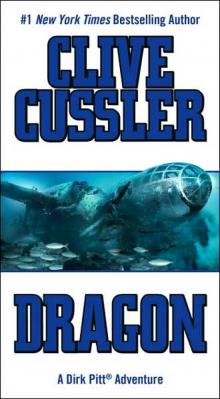 Dragon
Dragon Piranha
Piranha Poseidon's Arrow
Poseidon's Arrow The Cutthroat
The Cutthroat Atlantis Found
Atlantis Found The Jungle
The Jungle The Oracle
The Oracle Treasure / Dragon / Sahara: Clive Cussler Gift Set
Treasure / Dragon / Sahara: Clive Cussler Gift Set Clive Cussler and Dirk Pitt Revealed
Clive Cussler and Dirk Pitt Revealed The Sea Hunters
The Sea Hunters Pirate
Pirate The Striker
The Striker Plague Ship
Plague Ship The Wrecker
The Wrecker Iceberg
Iceberg The Chase
The Chase The Spy
The Spy Golden Buddha
Golden Buddha The Titanic Secret
The Titanic Secret Zero Hour
Zero Hour Fire Ice
Fire Ice Dark Watch
Dark Watch The Storm
The Storm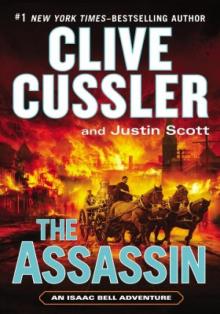 The Assassin
The Assassin Vixen 03
Vixen 03 Arctic Drift
Arctic Drift Night Probe!
Night Probe! Cyclops
Cyclops Medusa nf-8
Medusa nf-8 Shock Wave dp-13
Shock Wave dp-13 Marauder (The Oregon Files)
Marauder (The Oregon Files) Lost Empire fa-2
Lost Empire fa-2 Arctic Drift dp-20
Arctic Drift dp-20 Dirk Pitt 22 - Poseidon's Arrow
Dirk Pitt 22 - Poseidon's Arrow Treasure of Khan dp-19
Treasure of Khan dp-19 Dark Watch of-3
Dark Watch of-3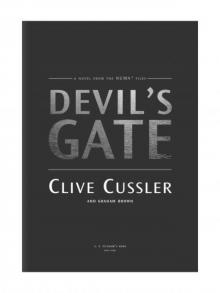 Devil's Gate
Devil's Gate The Sea Hunters II: More True Adventures with Famous Shipwrecks
The Sea Hunters II: More True Adventures with Famous Shipwrecks Flood Tide dp-14
Flood Tide dp-14 The Mediterranean Caper dp-2
The Mediterranean Caper dp-2 Iceberg dp-3
Iceberg dp-3 Sahara dpa-11
Sahara dpa-11 Pacific Vortex! dp-1
Pacific Vortex! dp-1 Deep Six dp-7
Deep Six dp-7 Dragon dp-10
Dragon dp-10 Serpent nf-1
Serpent nf-1 Havana Storm (Dirk Pitt Adventure)
Havana Storm (Dirk Pitt Adventure)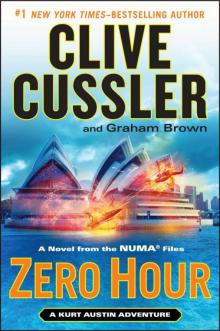 Zero Hour nf-11
Zero Hour nf-11 The Storm nf-10
The Storm nf-10 The Thief ib-5
The Thief ib-5 Lost City nf-5
Lost City nf-5 The Mayan Secrets fa-5
The Mayan Secrets fa-5 White Death nf-4
White Death nf-4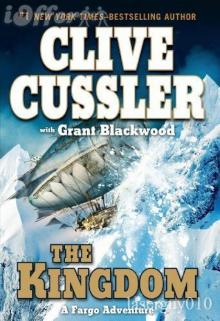 The Kingdom fa-3
The Kingdom fa-3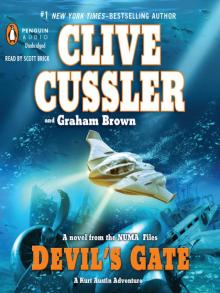 Devil's Gate nf-9
Devil's Gate nf-9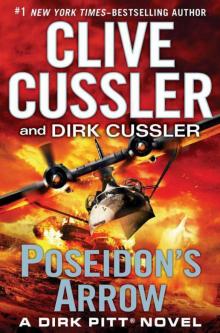 Poseidon's Arrow dp-22
Poseidon's Arrow dp-22 Raise the Titanic dp-4
Raise the Titanic dp-4 Shadow Tyrants--Clive Cussler
Shadow Tyrants--Clive Cussler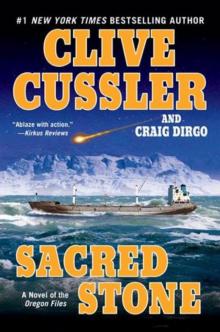 Sacred Stone of-2
Sacred Stone of-2 Skeleton Coast tof-4
Skeleton Coast tof-4 Mirage tof-9
Mirage tof-9 The Jungle of-8
The Jungle of-8 The Emperor's Revenge (The Oregon Files)
The Emperor's Revenge (The Oregon Files) Golden Buddha of-1
Golden Buddha of-1 Blue & Gold
Blue & Gold The Tombs fa-4
The Tombs fa-4 Inca Gold dp-12
Inca Gold dp-12 Treasure dp-9
Treasure dp-9 Atlantis Found dp-15
Atlantis Found dp-15 Black Wind dp-18
Black Wind dp-18 the Silent Sea (2010) tof-7
the Silent Sea (2010) tof-7 The Wrecker ib-2
The Wrecker ib-2 Fire Ice nf-3
Fire Ice nf-3 The Chase ib-1
The Chase ib-1 Sahara
Sahara The Striker ib-6
The Striker ib-6 Polar Shift nf-6
Polar Shift nf-6 The Race ib-4
The Race ib-4 Corsair of-6
Corsair of-6 Cyclops dp-8
Cyclops dp-8 The Navigator nf-7
The Navigator nf-7 Plague Ship tof-5
Plague Ship tof-5 Sea of Greed
Sea of Greed Vixen 03 dp-5
Vixen 03 dp-5 Thriller 2: Stories You Just Can't Put Down
Thriller 2: Stories You Just Can't Put Down